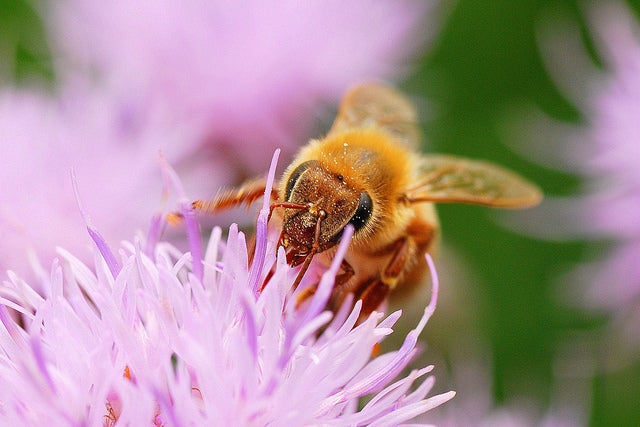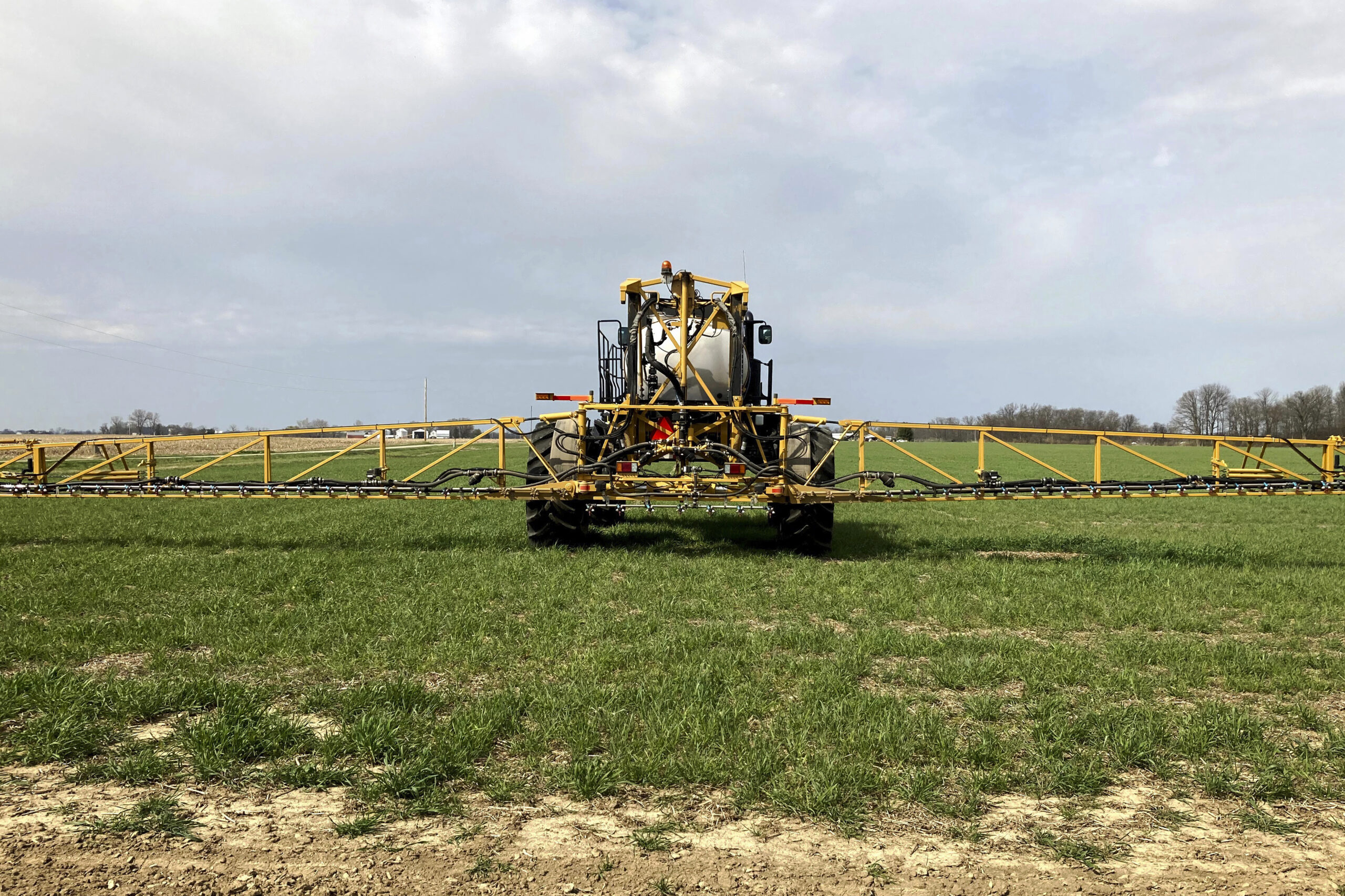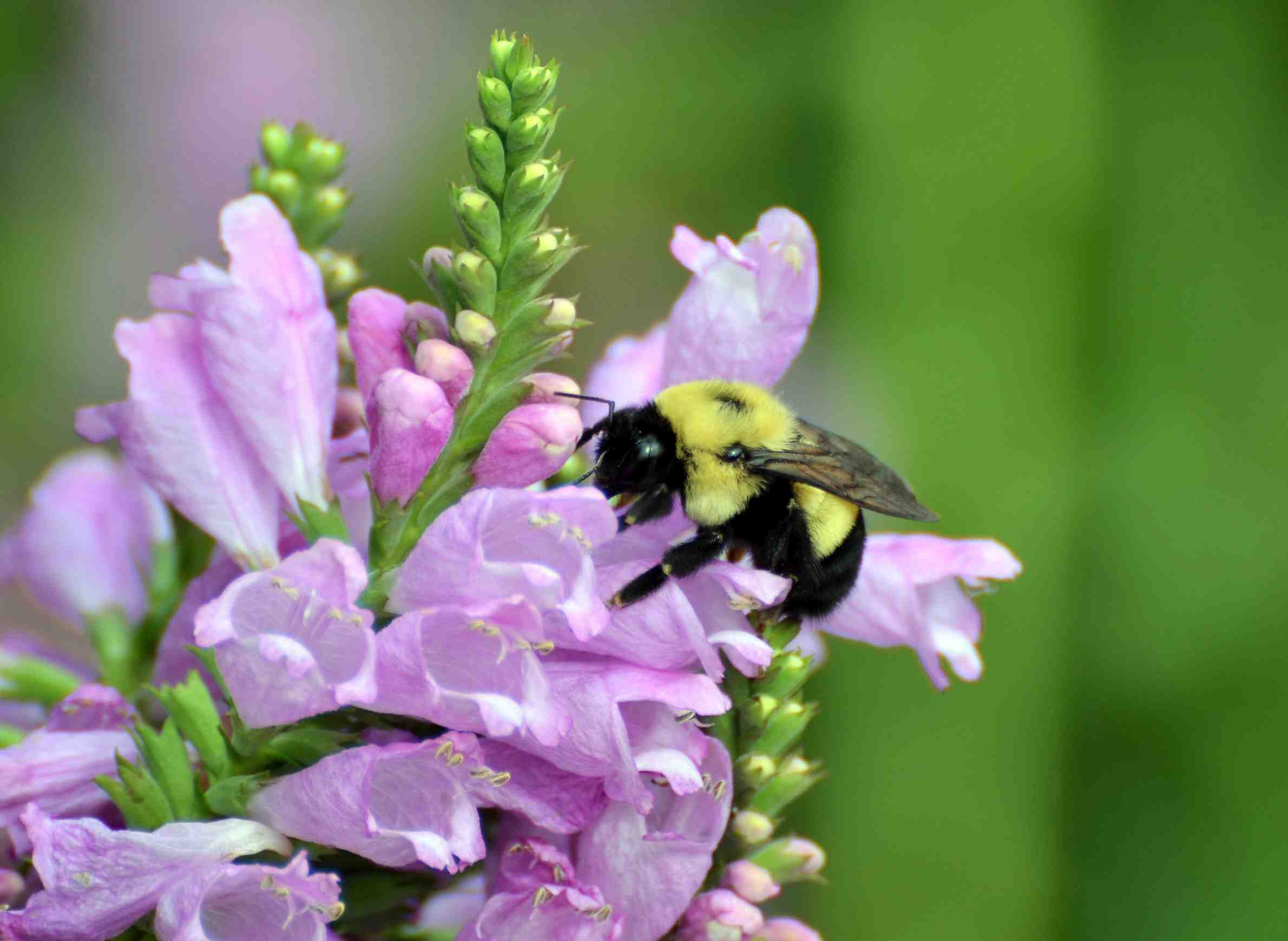The federal government is giving farmers incentives to plant more wildflowers in hopes that it will improve dwindling honey bee populations.
The decline in honey bees can be blamed on a number of factors like disease, insecticide and pesticide use, as well as stress from being moved around the country to pollinate different crops. In Wisconsin, commercial honey bees are trucked in to help with the apple and cranberry harvests.
According to the U.S. Department of Agriculture, there are 2.5 million honey bee colonies nationwide. Almost 70 years ago, there were 6 million.
Stay informed on the latest news
Sign up for WPR’s email newsletter.
Now, the USDA wants to give at least $8 million to farmers and landowners in five upper Midwestern states, including Wisconsin, who set aside land to grow wildflowers and other plants.
University of Wisconsin-Madison entomology professor Claudio Gratton said creating honey bee-friendly habitats is just one of the many tools that could get the pollinators thriving once again.
“We could start thinking about diversity in landscapes as something we actually want to enhance and maintain,” he said. “Having more diversified farms could be one of the next steps that comes from taking the lessons that we learn from incorporating pollinator habitat into our current landscapes.”
Gratton said that adding more of these habitats will also help Wisconsin’s 500 native bee species. He said the habitats can draw the pollinators in and they’ll eventually visit nearby crops.
It’s still unclear how much money Wisconsin landowners could get from the incentives and what rules they’ll have to follow under the program. The Wisconsin State Farm Service Agency Office says it will have more details later this week.
Wisconsin Public Radio, © Copyright 2025, Board of Regents of the University of Wisconsin System and Wisconsin Educational Communications Board.






